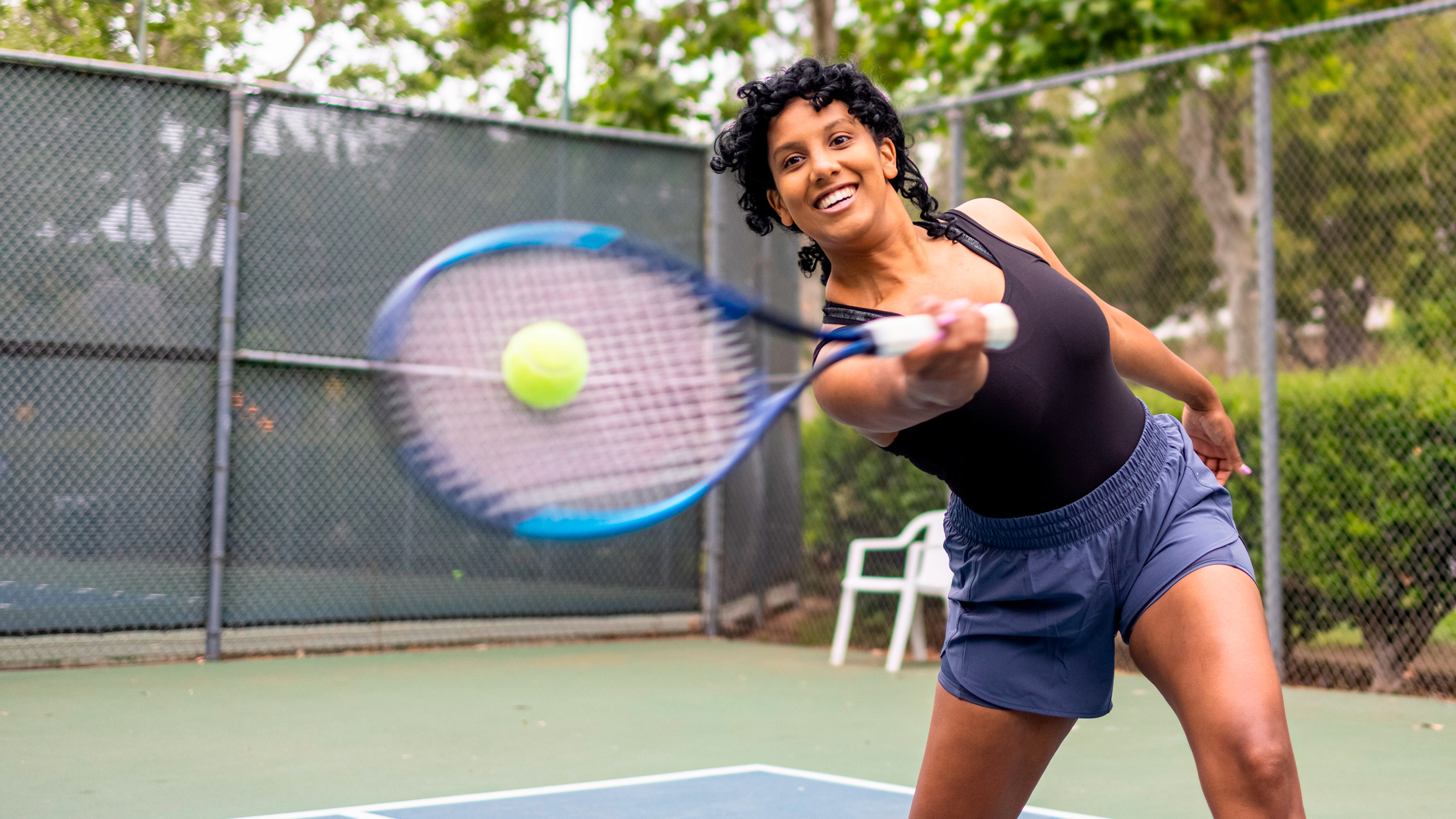What is mindful walking?
Mindful walking can be a great practice to calm your mind while keeping active


How often do you go for a walk, only to get sucked in by your phone, music, or the latest episode of your favorite podcast? The practice of mindful walking aims to eliminate these distractions, helping you to become more aware of your surroundings.
All you need is a pair of the best shoes for walking, and you're ready to go. In fact, if you're learning how to meditate, mindful walking can be a great practice to start with because it doesn't require you to sit still. Not to mention, you get to reap the benefits of walking at the same time as training your mind.
So how does mindful walking work, and how can you give it a go? We consulted the experts to bring you a beginner's guide.
What is mindful walking?
Mindful walking is more than simply heading out for a gentle stroll. The practice is about being aware of your body and physical sensations as you move and how these relate to your environment.
It's very similar to the Japanese practice of forest bathing, which involves immersing yourself in nature, deep breathing, and tapping into your senses. The critical difference is that you can practice mindful walking anywhere — even in an urban setting.
Think of it as a more accessible form of forest bathing for those who don't live close to a park or woodland but still want to connect with the space around them.

Does walking help with mindfulness?
According to Eve Lewis Prieto, Director of Meditation at Headspace, mindful walking is a common and popular form of practicing mindfulness and allows the body time to move and stretch after sitting for long periods.
Get the Fit&Well Newsletter
Start your week with achievable workout ideas, health tips and wellbeing advice in your inbox.
"Walking is something that most of us are very familiar with and do daily, and it's a beautiful way to cultivate mindfulness by paying attention on purpose to the movement of your feet and body as you walk," she says.
"But more than that, it encourages us to connect with our environment and engage our senses, feeling the connection with the ground beneath you, taking in sights and sounds around you, and even feeling the lungs expand as you take in the fresh air."

Eve is Director of Meditation and a certified mindfulness teacher who has been with Headspace since 2013. She regularly leads live meditation sessions and is passionate about teaching people the benefits of meditation and mindfulness, specifically around stress reduction, resilience, and self compassion.
She also adds that often when we walk, we're not paying attention to the act of walking. "We might be distracted by a barrage of thoughts, often projecting forward into the future or rehashing events from the past," she says. "Intentionally focusing on the movement of your feet as you walk gently allows you to let go of your thoughts and rest your attention in the present moment."
Sarah Campus, a personal trainer from LDN Mums Fitness, also believes that walking goes hand in hand with mindfulness. And since walking is a basic activity that most people engage in on a daily basis, you can practice mindful walking any time — whether it's for 30 seconds or 30 minutes.
"But it's this regularity that helps mindfulness become a part of everything you do," she says. "Mindful walking may take a little time to get used to, but it is worth persisting."

Sarah Campus is a Level 3 qualified personal trainer and gym instructor who has completed programs in exercise and nutrition, exercise referral, post-natal, exercise for older adults, and more. She practices mindful walking in her spare time.
What are the benefits of mindful walking?
The benefits of mindful walking are for physical well-being and mental health, says Campus. This includes positive changes to anxiety, depression, mood, mindfulness, and life satisfaction. Lewis Prieto also adds that research shows mindful walking can help us to manage stress, improve our sleep, and even reduce blood pressure and heart rate.
"Beyond the research, mindful walking helps us feel more connected to our bodies by getting us out of our heads and into the body. It can allow us to connect more with nature, and in turn, it can encourage us to slow down and strengthen our concentration and attention."
How can you practice mindful walking?
Mindful walking doesn't need to take up a huge amount of your time or energy. Below, Campus explains how to practice a 10-minute mindful walk:
- As you begin, walk at a natural pace.
- For a few minutes, expand your attention to sounds. Then, shift your awareness to your sense of smell.
- Now, move to vision: colors, objects, and whatever else you see.
- Keep this open awareness of everything around you, wherever you are.
- Focus on your breath — inhaling through the nose and exhaling from the mouth deeply.
- Focus on your posture with shoulders rolled up, back, and down.
- Then, walk and enjoy feeling each step you take. Continue for the length of time you desire.
"When you notice that you have gotten distracted, gently return your attention to the movement of the feet on the floor or the ground," advises Lewis Prieto. "If you are feeling quite stressed or anxious, starting walking quickly and then gradually slowing the pace down can be helpful.
"When we are stressed, the body produces a lot of hormones that give us extra energy in case we need to run away or fight something, so moving quickly and releasing that energy can help calm the nervous system down."

Is mindful walking the same as a meditation walk?
So is mindful walking the same as a meditation walk? Yes and no, says Lewis Prieto.
"Walking meditation can be done in your home or in a class setting; you don't always have to go for a 'walk' that has a destination," she explains. "But equally, you can go for a mindful walk and still practice walking meditation."
For example, she says you can find a space in your home, like the length of a yoga mat or a clear space of about six to eight feet. Stand with your feet about hip-width apart, noticing your posture and feeling the feet connected with the ground beneath you.
Gently move back and forth so you can feel the weight of your body move and sway, hands down by your side, taking a deeper breath as you lift your right or left foot. Slowly and gently, start walking the length of your mat or space, noticing all the sensations in the body as you move.
According to Lewis Prieto, mindful walking follows the same instructions as above, but you don't necessarily have to walk as slowly. "Go at your own pace and expand your attention to take in your surroundings, connecting with your environment by engaging your senses."

Alice Ball is the Health Editor for Future Plc. With more than five years of experience working in health journalism, she's covered everything from why we should 'kill' the calorie, to destigmatizing the menopause. Alice also specializes in nutrition and supplements. She's a self-confessed running fanatic, currently in training for her fifth marathon. She enjoys documenting her progress on her Instagram account, @aligoesrunning. Alice works across a number of Future's sites, including LiveScience and Fit&Well.
-
 I do these two things every day to stay fit and healthy, says the newest star trainer on Chris Hemsworth's fitness app
I do these two things every day to stay fit and healthy, says the newest star trainer on Chris Hemsworth's fitness appHere's how Centr's Korey Rowe trains for longevity
By Sam Rider Published
-
 I thought sports weren't for me, until I realised they're a game-changer for ticking off cardio
I thought sports weren't for me, until I realised they're a game-changer for ticking off cardioI swapped HIIT and running for tennis—and I've never felt better
By Alice Porter Published